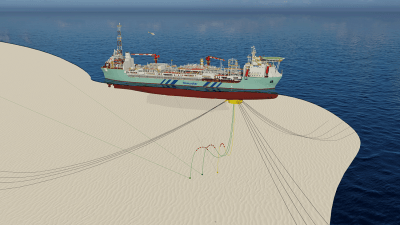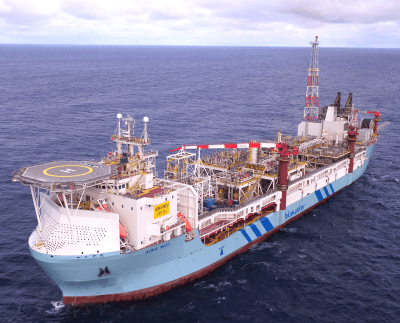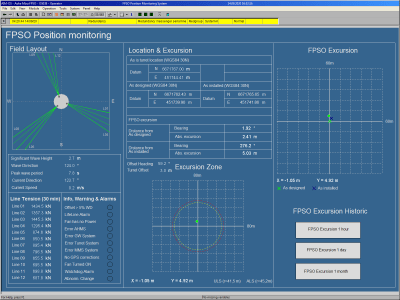Office tool aNySIM calculates the real-time mooring line tensions on board the Aoka Mizu FPSO
The existing hull structural monitoring system of the Aoka Mizu FPSO was extended in August last year with a time domain software tool able to provide valuable information regarding the integrity of the mooring lines.
Bluewater’s disconnectable turret moored Aoka Mizu FPSO had been operating at the Ettrick field, in the UK part of the North Sea, until the summer of 2016. It has since been contracted by Hurricane Energy for use in the Lancaster field, West of Shetland, in about 150 m water depth. The mooring system consists of three bundles with four lines each. Upgrade and life extension works to the vessel were carried out at Drydocks World, Dubai to make it suitable for long-term operations in a challenging environment such as the West of Shetlands. First oil was received in June 2019.
Following the success of the FPSO hull monitoring programmes developed over the last decades such as Monitas, Bluewater decided to equip the FPSO with an extensive environmental and structural monitoring system. The new system was installed during the upgrade at Drydocks World, Dubai. Its goal is also to validate predictions on several design choices and monitor the actual fatigue life and load history of critical components of the FPSO. This is especially relevant in the exposed conditions at the Lancaster field (both for fatigue and extreme loads).
To get more insight into the actual mooring loads, Bluewater decided to monitor the mooring loads and associated fatigue using indirect mooring load measurements. With a detailed numerical model of the mooring system, the mooring line tensions are calculated with the time domain simulation program aNySIM, using the FPSO measured wave frequency motions, the measured horizontal turret position in the field and the draught of the FPSO as input. These measurements are provided by the structural monitoring system, which includes a Motion Reference Unit (MRU) and an accurate RTK DGPS system to obtain the horizontal turret positions. Using the measured response of the FPSO avoids the uncertainty resulting from a prediction of the hydrodynamic response. The time domain software, running on board the FPSO, generates the real-time static and wave frequency mooring line tensions. This provides the operator with valuable data for the validation of the design. The associated fatigue analysis contributes to knowledge on the integrity of the mooring system.
Mooring line tensions and fatigue
The calculated mooring line tensions and fatigue are then visualised and stored by the structural monitoring system. The average values of the mooring line tensions are forwarded and presented on the bridge of the FPSO.
One of the main benefits of the indirect mooring line tension monitoring system is its robustness, since all monitoring equipment is located on the FPSO (not subsea). This equipment is fully accessible and therefore maintainable and replaceable if needed. Sensors installed on the mooring lines are known to fail in the industry and repairing them is costly and may have an impact on the operational activities aboard. Replacing a sensor on the mooring line may even require temporary disconnection of the mooring line (in the case of direct tension monitoring).
The analysis methodology used in the indirect mooring line tension monitoring system provides an important contribution to the development and maintenance of a digital twin of a mooring system. By integrating the design model and in-field measurements, the long-term distribution of forces in the mooring lines can be monitored. This generates a detailed knowledge of the status of the mooring system, providing design feedback for the future and support operational decision making.




